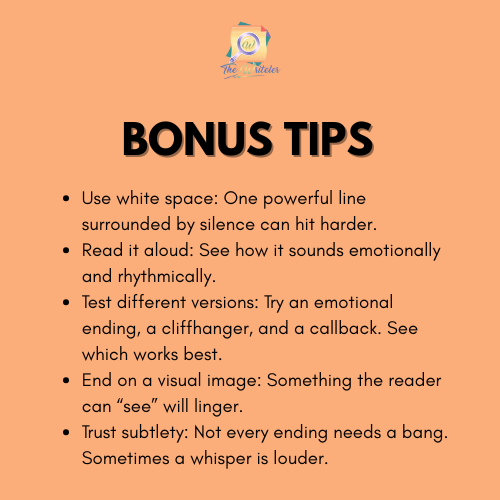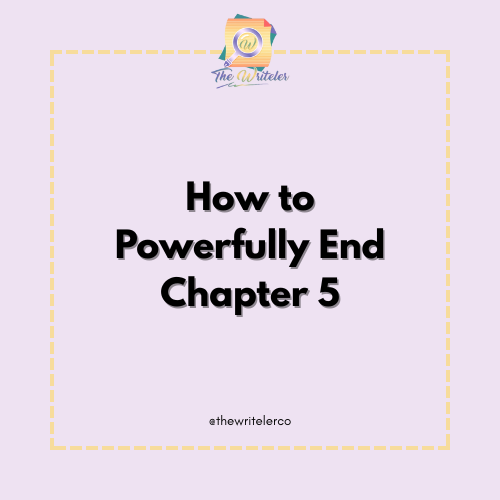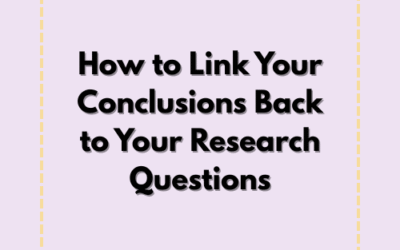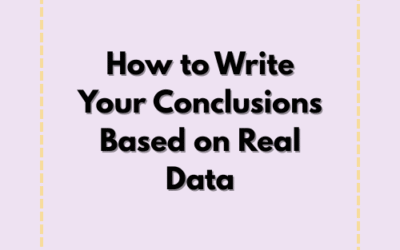The way you end a chapter can either invite the reader deeper into your story or quietly let them go. And when it comes to Chapter 5, that moment holds particular weight. It’s the invisible threshold where a reader often decides: Am I in or out?
Whether you’re writing a novel, a memoir, or a nonfiction guide, Chapter 5 serves as a natural pivot point. Let’s break down how to close it powerfully and keep the reader begging for more.
Why Chapter 5 Is So Pivotal
By the time your reader reaches Chapter 5, they’ve invested time, energy, and curiosity into your narrative. This chapter is often where:
- The setup gives way to deeper conflict or growth.
- The first act concludes, and a new layer begins.
- The reader silently decides if the book is “worth finishing.”
It’s not just a chapter. It’s a test of commitment.
Ending Chapter 5 with strength gives you momentum—and ensures your reader turns to Chapter 6 with purpose.
Common Mistakes in Chapter 5 Endings
Here are a few traps writers fall into when closing Chapter 5:
- Ending with filler. Don’t waste your final lines on exposition or logistics (like what the character had for breakfast).
- Tying things too neatly. If there’s no open loop or emotional thread pulling readers forward, they may lose interest.
- Skipping impact. If the ending feels flat, rushed, or like a placeholder, it weakens the narrative tension.
Avoid these mistakes to make your Chapter 5 one that leaves a mark.
Techniques to Powerfully End Chapter 5
Let’s look at specific tools to sharpen the last lines of Chapter 5—whether you’re a fiction writer, a memoirist, or writing personal development books.
1. The Cliffhanger Ending
Leave something unanswered:
- A knock at the door.
- An accusation.
- A discovery.
Example: “She opened the envelope and gasped—but what she saw made no sense.”
This creates urgency that pushes the reader into the next chapter.
2. The Emotional Drop
Land on a heavy truth or tender moment. Emotion is fuel.
Example: “It was the first time she admitted it out loud: she never wanted to come back.”
This works well in both memoir and fiction—especially when Chapter 5 explores vulnerability.
3. The Foreshadowing Line
Tease what’s coming.
Example: “If she had known what was waiting, she never would have said yes.”
It adds depth to your narrative and keeps readers curious.
4. The Decision Point
A character makes a bold choice. A reader commits to an idea.
Example: “He stepped onto the train and didn’t look back.”
In self-help or nonfiction, this can be a pivotal mindset shift or practical exercise.
5. The Echo Ending
Circle back to a line, idea, or image from earlier in Chapter 5. This creates thematic closure while leaving space to grow.
Example: “She finally understood what her father meant when he said, ‘Silence is louder than words.’”
This gives resonance to your writing.
Sample Endings From Chapter 5 in Different Genres
Fiction Example:
Chapter 5 ends with the protagonist discovering a long-lost letter that alters their understanding of their past—just before the letter is stolen.
Memoir Example:
Chapter 5 closes on a difficult confession, perhaps the first honest moment in the story so far.
Nonfiction Example:
Chapter 5 wraps up with a reflective question and a teaser for the next principle or lesson—leaving the reader introspective and hungry.
Chapter 5 Endings Checklist
Before moving on to Chapter 6, ask yourself:
✅ Does this ending create forward momentum?
✅ Is there emotion, tension, or insight?
✅ Does it feel earned—not rushed or tacked on?
✅ Would I, as a reader, feel compelled to continue?
If the answer isn’t yes to at least three of those, revisit your final lines.
Extra Tips to Level Up Your Chapter 5 Ending

✍️ Try The Writeler Co. Writing Services
Stuck on your Chapter 5 ending? Need help shaping your book’s emotional beats or story flow? The Writeler Co. offers personalized writing and editing services for authors, content creators, and aspiring storytellers.
Whether you need:
- Chapter feedback
- Line-by-line edits
- Story structure help
- Or done-for-you ghostwriting
Our team is ready to help you finish strong.
📩 Visit The Writeler Co. and elevate your writing today.
Final Thoughts: Chapter 5 Is a Threshold, Not a Wall
Think of Chapter 5 as a doorway—not a destination. How you end it matters more than how long it is. It’s not about length or drama, but about intention. Do you want your reader to reflect? To wonder? To brace for what’s next?
Great writing is about rhythm, payoff, and energy—and Chapter 5 is where your rhythm either crescendo or cuts out.
So take your time. Revisit your last lines. Make them sing.





0 Comments